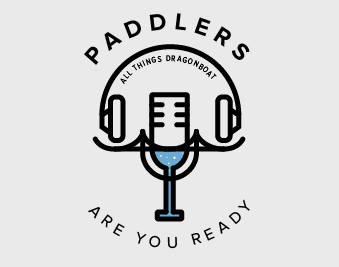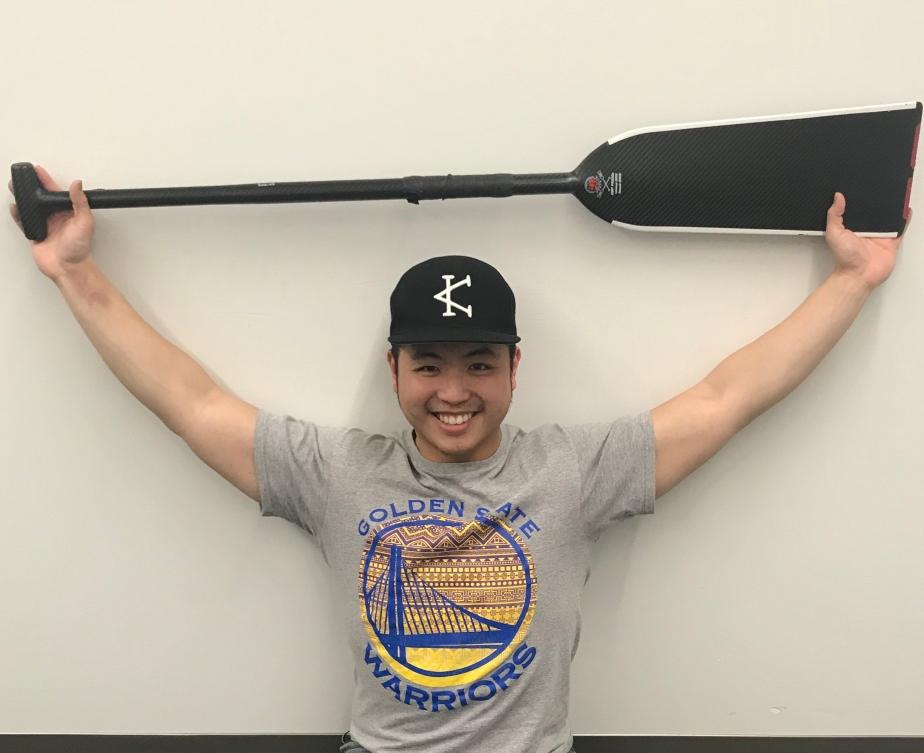Article Objectives
- Briefly List/bring awareness to relevant muscles of the back/neck
- Discuss the cue of keeping your head up/Recognize a common movement pattern
- Possible Interventions for thoracic mobility/Neck Pain
Sections
- Intro – “Keep your head up/look forward!”
- Anatomy
- Movement Faults
- Considerations and Conclusion
- Interventions
If you wonder why your paddler always keeps their head down and forgets to look forward in the boat, consider looking at their upper backs.
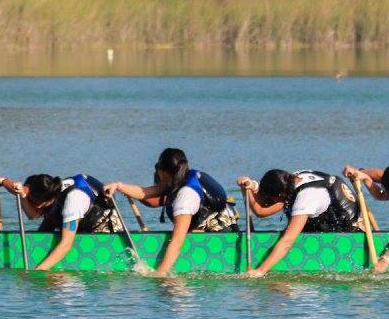
While the spine is a complex beast to comprehend, there are very simple, quick, and applicable ways that we could make immediate changes in our performance, and pain levels.
Today we discuss the cue “keep your head up” and “look up when you paddle”. These cues may come with the right intent, yet may have insidious effects, unbeknownst to the coaches. A coach uses these cues to prompt the athlete to look at the strokers ahead so that they can maintain timing within the boat. But let’s say your athlete has corrected their error thanks to your cue and is now looking up towards the front of the boat, problem solved…right?
Right. and Wrong.
Let’s take a deeper look.
Anatomy Overview (Click here for in depth review of spine) *Skip this section and go to “Movement Faults” if not interested in specific anatomy component*
Your posterior neck/upper back muscles along with the rest of your posterior chain, and its ligaments are responsible for limiting forward flexion in the neck/upper back.
The upper trap (part of the trapezius) is one such muscle. Additionally, one of its main actions is to initiate elevation and upward rotation of your scapula. When you paddle, you need your scapula to be stable, yet free to move so that you can maximize motion at the shoulder and minimize risk of injury.
In a forward posture – rounded upper back/neck, our upper trapezius muscle that traverses our spine, scapula, and the base of our skulls will be inefficiently recruited more as a stabilizer/elevator than an upward rotator of the scapula. Furthermore, your levator scapulae, splenius capitis/cervicis, semispinalis capitis/cervis, and erector spinalis muscles will be forced to contract more than necessary. In this position, the levator scapulae, will further act as a retractor and elevator of our scapula, and downward rotator countering what upper, middle, and lower trapezius should be doing. Thus, our entire scapulothoracic rhythm is compromised and our muscles are overused in such a slouched position.
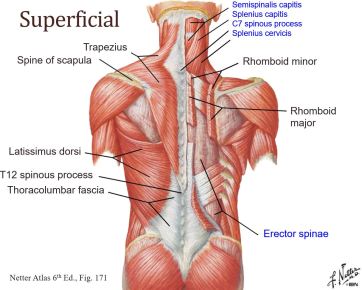
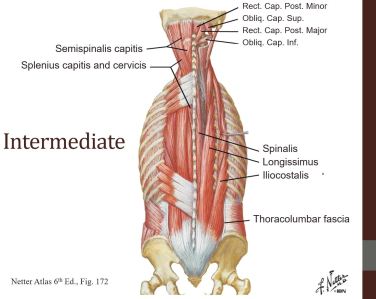
Your anterior neck consists of muscles such as the sternocleidomastoid, scalenes, and longus colli/capitis. Together, they act to assist with flexion at the head and neck. More specifically however, your deep neck flexors – longus colli/capitis, who’s axis of rotation lies close to the anterior vertebral bodies, works syngeristically with the upper trapezius muscle of the back. They therefore not only assist with craniocervical flexion, but indirectly act to help with the scapulothoracic rhythm mentioned above.
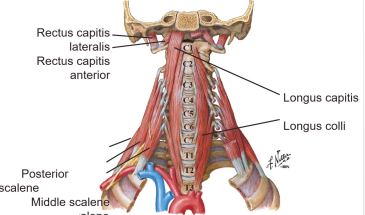
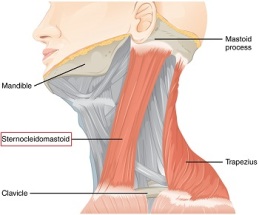
The more forward your neck and upper back is, the more shortened your SCM (sternocleidomastoid) and scalenes become. As they have a role in accessory respiration, respiration patterns may become more shallow and belabored. Lastly, your DNF (deep neck flexors) become underactive and is unable to assist with scapulothoracic rhythm.
With this forward head posture set into motion, our posterior neck muscles – semispinales, splenius, upper trap, suboccipital muscles will have to constantly contract to keep our heads up right, leading to shortened and tigntened muscles in the back of our necks.
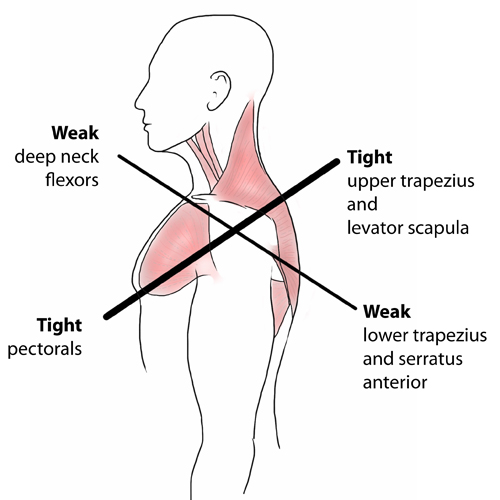
Movement Faults
In normal upright standing, our anterior muscles and posterior muscles are in a constant tug of war to stabilize our bodies to keep our center of mass around anterior to our S2 vertebrae. When we carry a box, our center of gravity is pulled in front of us, thus our back muscles, posterior neck muscles, and ligaments work harder to keep us from falling flat on our face. Too much of this strain could lead to injury in our low backs. This is a reason why pregnant women often get back pain. Contrary to this, when we wear backpacks at school, our COG (center of gravity) is shifted behind us. To compensate for this, we often slouch forward in our upperbacks.
There are many activities that we partake in our daily lives that put us in such a forward position. When somebody sits and works at a desk all day, all their essentials are placed in front of them. Working and standing at a cash register, you reach forward to distribute change. Overtime, individuals are likely to develop a forward posture in their upper back, known as thoracic hyperkyphosis, as demonstrated in the image below. Think of this position like holding the box, being pregnant, or holding any heavy item in front of you for a long time. Your COG is displaced anteriorly, placing the strain in our posterior chain.
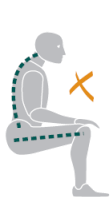
Eventually, our rounded posture becomes the norm. After sitting in this rounded position all day, students will put on their backpacks, further cueing our bodies to lean forward just as they would sitting at a desk.

What doesn’t help our cause is the fact that naturally, our thoracic spine/upper back is shaped in a manner that will reenforce some forward posture. In addition, the center of mass of our heads already falls anterior to the line of pull as evidenced in Figure A.
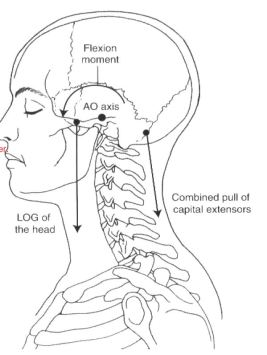
The problems begin to compound with excessive thoracic kyphosis in our upper backs as additional strain in our posterior neck is required to keep our head/eyes looking forward. If we do not keep our heads upright, we would always be looking down, and the body undoubtedly decides that that would be an inconvenient position to walk around in. Thus, our excessive thoracic kyphosis is often coupled with excessive cervical lordosis, aka strain in your neck.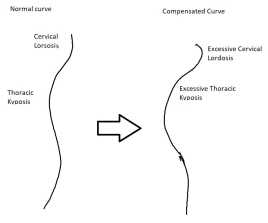
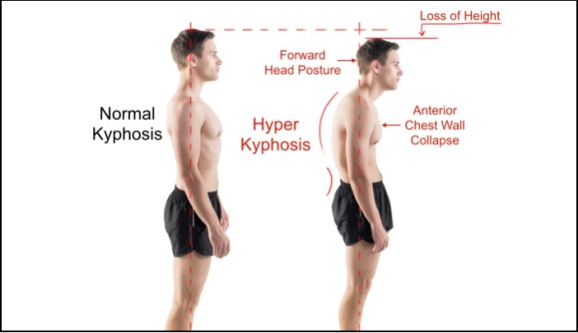
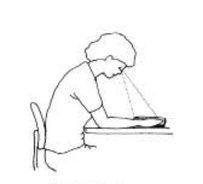
When we read a book for example in front of us on a low table, or eat a meal – positions that do not require hinging from the posterior neck, our superficial neck muscles in the front will be grow shortened, and our deeper neck flexors that help us keep a neutral positioning at the head will grow weak. This is especially the case for an individual that sits in this forward-slouched position all day. But now when we stand and hold that book in front of us, instead of standing erect with normal posture, we will be more forward/hunched with our necks hyperextended straining to keep our heads up right.
—
Dragonboat, then is not unique in its demands that ask us to lean forward to begin our stroke, but it certainly isn’t forgiving to the individual who fails to correct the movement patterns developed from years of working with a slumped upper back.

Figure B demonstrates 2 paddlers (the middle/right images depict the same paddler). The 1st paddler maintains rigidity throughout the spine and hip hinges properly, affording the opportunity to keep his eyes forward with minimum strain to the neck/upper back. Paddler 2 can be described as the same person that we discussed above: always in a forward posture, sitting at a desk all day, unable to attain full thoracic extension. Even if the athlete intiated the stroke with a proper hip hinge, the curvature of his spine and compensated structures leads to a natural downward trajectory and hanging of the head.
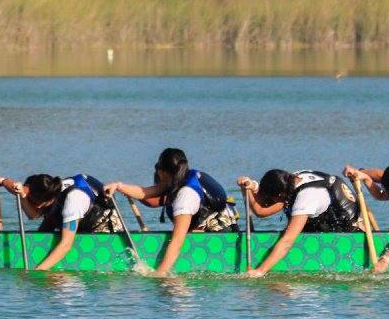
The furthest right paddler in Figure B is what happens when the posterior neck tightening compensation is made, whether it be the athlete forcing themselves to look up/forward, or whether it be the coach cueing the athlete to do so.
When an athlete is rounded in their upper back(thoracic hyperkyphosis), their back muscles (traps, levator, erector spinae, splenius/semispinalis – anything that attaches from the spine/scapula directly to the head/neck) will have to work harder to counter the forward flexion/flexion moment in our backs during the catch/pull. Rather, if an athlete is able to maintain a more upright positioning, these muscles won’t have to work as hard.
From a body-wellness standpoint, unecessary strain in the posterior neck then leads to the bouts of neck pain, overused/underused muscles, changes in muscle length, stiffness, and unecessary fatigue that paddlers often complain about during/after practice. From a biomechanical standpoint, this is inefficient because you begin to habitually use your mid-back segments/muscles as a fulcrum to drive your blades down, rather than focusing on anchoring with your hips to bring your boat forward to the water.
Considerations, Conclusion, & Interventions
By telling an athlete to keep their head up or to look forward, we might be missing the bigger picture that there is another movement dysfunction involved – excessive thoracic kyphosis that leads to craning at the neck. We have not even begun to discuss the implications of limited low back mobility and why this may lead someone to slouch in their upper backs, but at least this is a start.
The most egregious of anomalies (super forward posture in the neck) are typically symptoms of a larger problem that requires digging. Don’t just fix local symptoms, strive to correct global faults.
If the only goal is to correct the error in timing – then sure, maybe the problem is partially corrected. But our job as coaches/athletes should be more involved. A coach’s job should never be to point at a error and tell an athlete to make a fix. A coach’s job should be to point at a error and ask “Isn’t that strange. Why are they making that error, and what is causing the athlete to do that?” We have an obligation to our team performance, but most importantly an obligation to minimize injury to individuals that make up the team – let’s not lose sight of that fact.
There are two general scenarios for which I could forsee the cue of “looking up/keep your head up” being implemented.
- The newer paddler or seasoned athlete that simply does need a quick reminder to not focus so much on their own paddles.
- The athlete with structural compensations, or inadequate motor control/coordination.
While we may luck out when using this cue with the first athlete, regularly implementing the aforementioned cue may reinforce suboptimal positions and performance in the latter athlete. Know when to use what cue.
This concept of excessive rounding in the upper back leading to neck pain/straining is even more relevant when considering the height of your craft in relation to the water and where you are sitting in the boat. The higher off the water you are, the more likely you are to see exaggerations in the poor posture dissected in today’s discussion. Thus, the higher off the water you are, the more pertinent it is that you find a safe and efficient way to approximate your blades to the water for a solid pull without compromising technique.
Below are some basic interventions that you may consider implementing to combat the neck pain/slumped stroke.
Interventions
Cues/Easy Fixes
- “Sit Up Right”, “Lead with your chest” – By using these words instead of “look up/look forward”, you are able to specifically address the movement dysfunction at large. A paddler who leads with his/her chest and sits more up right is likely to have an easier time looking forward at the paddlers in front.
- Don’t reach as far forward – Reaching forward allows the paddler to have an earlier catch/longer stroke. However, reaching too far forward will lead to compensations – often a hunched back/craned neck. Telling the athlete to not reach as far forward, and not to take as long a stroke will allow them to work on technique within their means.
Motor Control
1.Chin Nods (Deep Neck Flexors)/Chin Nods w/ Lacrosse Ball – In the anatomy section, we analyzed the relationship of your upper back muscles and muscles of your neck. To better involve your scapulothoracic rhythm with your upper trap properly, to help relax the overly used muscles (levator, SCM, Scalenes, pecs), and to engage the deep neck flexor muscles that help stabilze your head, you might consider using this exercise. Using the lacrosse ball depicted in the pictures will help add an external cue and allow for a deeper stretch in the back of the neck.
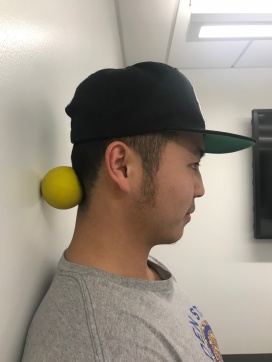
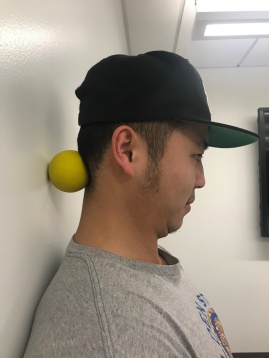
2. Core stabilizing Exercises
Often times, the movement dysfunctions discussed in this article can be from poor core control. This does not mean that someone’s core is weak – rather, the athlete may not know how to engage their core properly when rotating or paddling. It is therefore recommended to begin implementing more core work pre-paddling to wake up the muscles of the core and back! The images below aren’t necessarily the ones I would prescribe to just anyone, but it gives you a general sense of how you could manipulate one exercise to target different things and parts of the stroke.
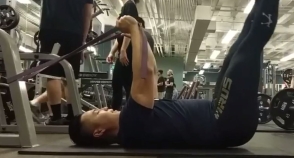
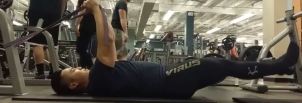
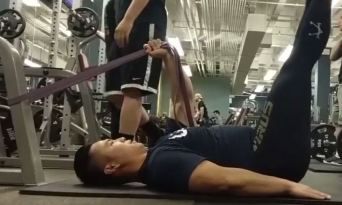
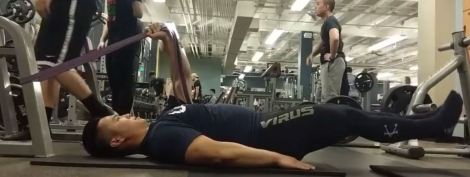
Posture/Movement
1.Thoracic Ext. Against the Wall
The goal of this exercise is to combat poor posture. It helps us open up into extension in the back and external rotation of the shoulders/arms. This allows our shortened pec muscles to open up and helps our back find better positioning in extension. The stretch may be felt in the chest, shoulders, upper back, mid back, and even low back. Adding a paddle or PVC pipe will help you attain a different variation of this stretch.
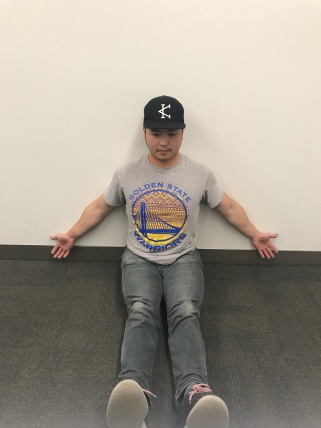
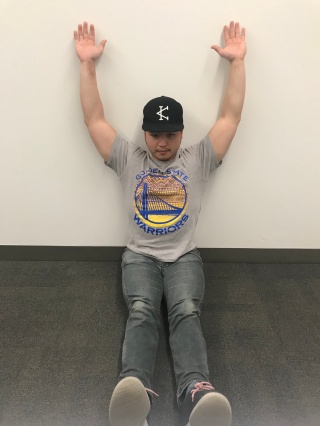
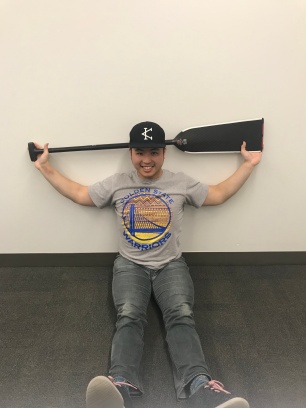
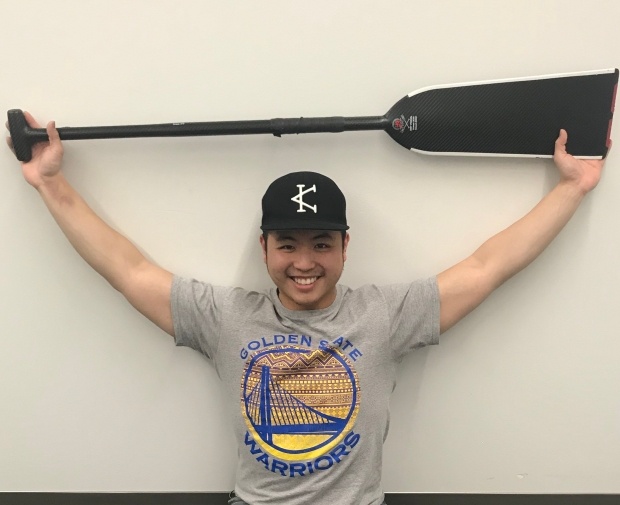
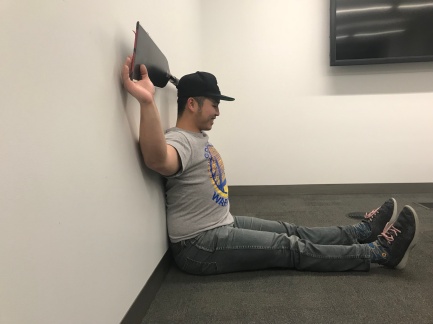
2. Hip Hinge
The hip hinge can be a great tool to teach somebody how to “lead with their chest” and hinge from the hips as they go forward in their stroke. By pushing the paddle or pvc pipe into the crease of the hips, you teach the paddler how to sit back into the stroke while bringing their bodies forward. Make sure that you keep good spinal integrity, otherwise it renders this exercise useless!
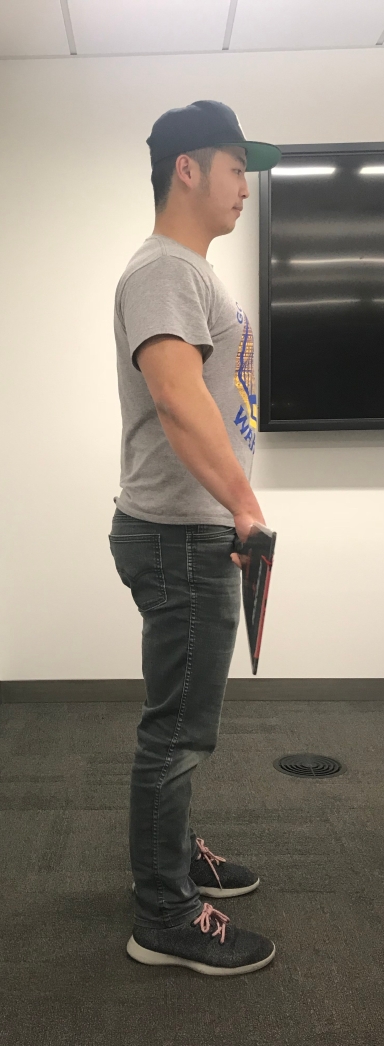

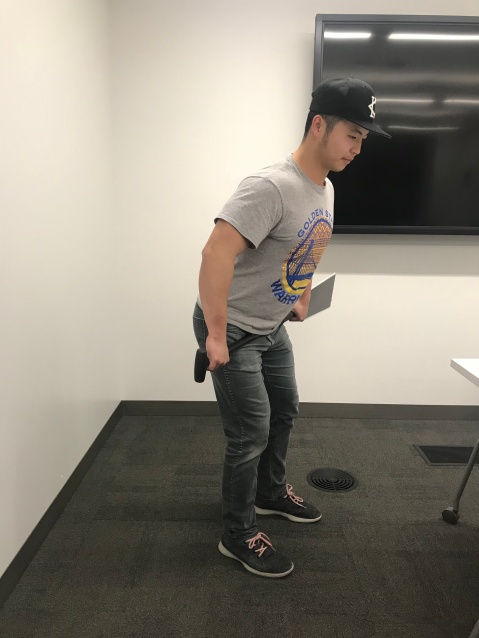
Hope you guys learned something from this article! As always, drop a line if you have any questions.
-Bryan
References
Neumann, DA. Kinesiology of the Musculoskeletal System. Mosby, St Louis, 2002
Netter, F. H. Atlas of Human Anatomy, Philadelphia, PA: Saunders/Elsevier. Harvard, 5th Ed., 2010
Pawlowsky, S. PT 742 – Thoracic Spine Lecture. Cervical Spine Lecture UCSF/SFSU Physical Therapy, 2018
